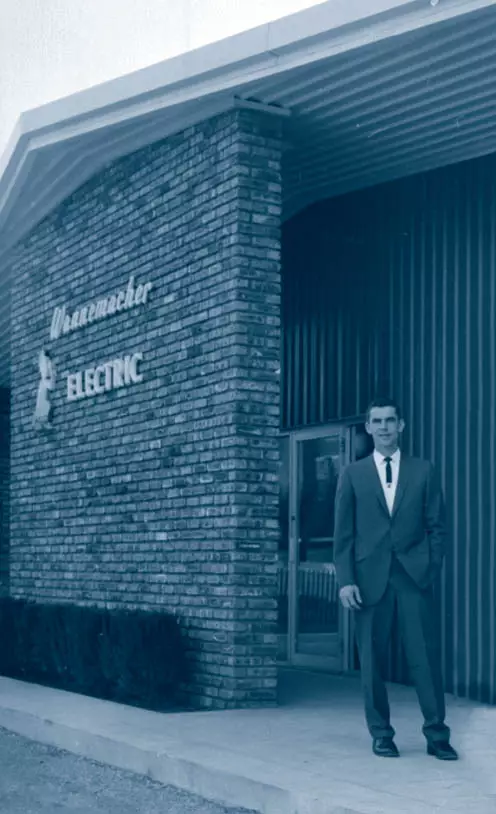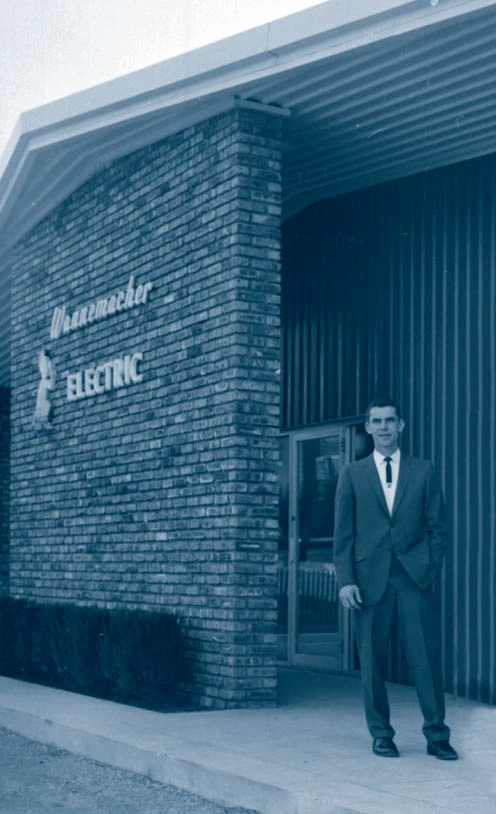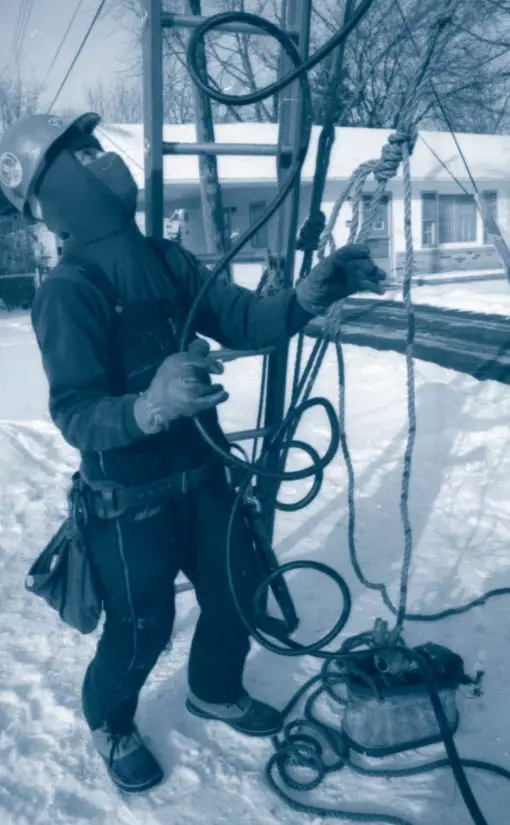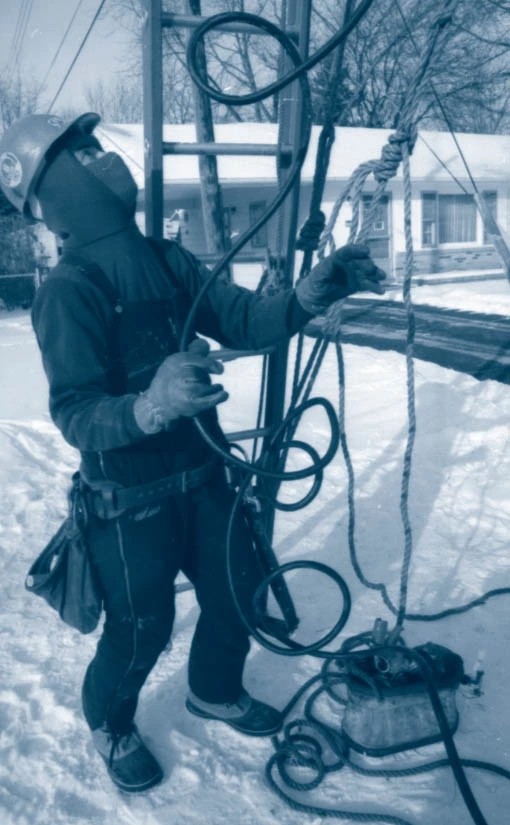Urban Expansion Created Jobs
Many construction and infrastructure jobs resulted from the urban expansion that began east of Veterans Parkway. It was also a time when women began to work in fields dominated by male workers.Featuring:Patricia O’Neil Wannemacher, (1931 – 2013), owner of Wannemacher ElectricJulie Violano Powell Brandt, (1955 – ), General Telephone maintenance splicerPatricia O’Neil Wannemacher (1931-2013) got involved in construction contracting in order to help her family survive. Her husband Jerry worked for D&H Electric, which had promised him stock in the company once he had worked 10 years. But in 1961, when he reached 10 years, the company reneged. With four young kids, they decided . . .
“We might as well go into business for ourselves. We have nothing to lose.”
— Pat Wannemacher
Working from home, Pat took phone calls, typed paperwork, and did the bookkeeping, while Jerry worked in the field. He taught her how to read blueprints, and she began to put together project bids. The kids were young, and she sometimes delivered parts with a child on one hip and supplies on the other. At the time Pat was the only woman contractor in the state of Illinois.
Three years later they were doing well enough to build a new building and in 1967 Wannemacher Electric incorporated. With Pat running the office and managing all the contracts, they expanded from residential and small commercial jobs to large projects including the installation of many of Bloomington-Normal’s traffic signals.
“I probably worked twice as hard as anybody else to make sure that everybody knew that this was not a game, that this was something that I was serious about.”
— Pat Wannemacher
Bloomington Pantagraph November 13, 1994
Pat did not always do things the way the men did.
Traffic signal projects typically required a number of separate contractors. Instead of just bidding for the electrical work, she did what she thought made sense — she bid the whole project. Pat was the first to take this approach, and it won bids. She then hired composite crews that worked together. At first it caused some static, but she only hired union workers, so most soon got over the fact that she was a woman.
Pat was a strong advocate for women who wanted to get involved in the business of construction. In 1989 she helped organize the Illinois Association of Women Contractors (AWC).
Pat retired in 1995, closing the business at the same time.
Julie Violano Powell Brandt ( 1955 - ) didn’t know what she wanted to do after she graduated from BHS in 1973. Her dad was a carpenter, but when she expressed interest in his work he responded, "No daughter of mine is going to be a carpenter!"
Julie attended ISU for a year, then got a job at General Telephone. As a repair clerk she took phone complaints, dispatched technicians, and filed reports. But Julie wanted better pay, and she didn’t mind getting dirty. So, in 1978 she began to bid on service jobs. She was soon working as a residential service tech, installing phones and repairing lines.
“The guys on my crews tested me because I was a newbie, but never treated me differently because I was a woman. I loved the job because it was a challenge, and I got to work with tools!”
— Julie Violano Powell Brandt
Julie rode with an experienced tech and attended training classes where she learned basic electronics, basic repair, AC-DC theory, and pole climbing. After completing training, she got her own van.
Julie was one of only a few women working in a field dominated by men.
How did this affect her views on women’s roles in the workplace?
Julie was determined to be a role model for young girls interested in fields not typically open to women.
In 1992 Julie bid on and got a new job as a maintenance splicer. Her first day was a little frightening — she looked at the tools and realized she didn’t recognize any of them. But her training partner assured her not to worry and that she would soon know what each tool was for and how to use it.
In January of 1994 she found herself repairing a line in -20 degree temperatures. Despite the cold, Julie liked this new job of repairing damaged cables. It was exciting because each job was different.
Julie retired in 2005 after 31 years with Bloomington phone companies.
“It's only really, really cold for a couple of weeks. That’s a small price to pay for being outside. Plus after a day like today, 30 degrees feels like a heat wave.”
— Julie
Norstar telephone, circa 1990
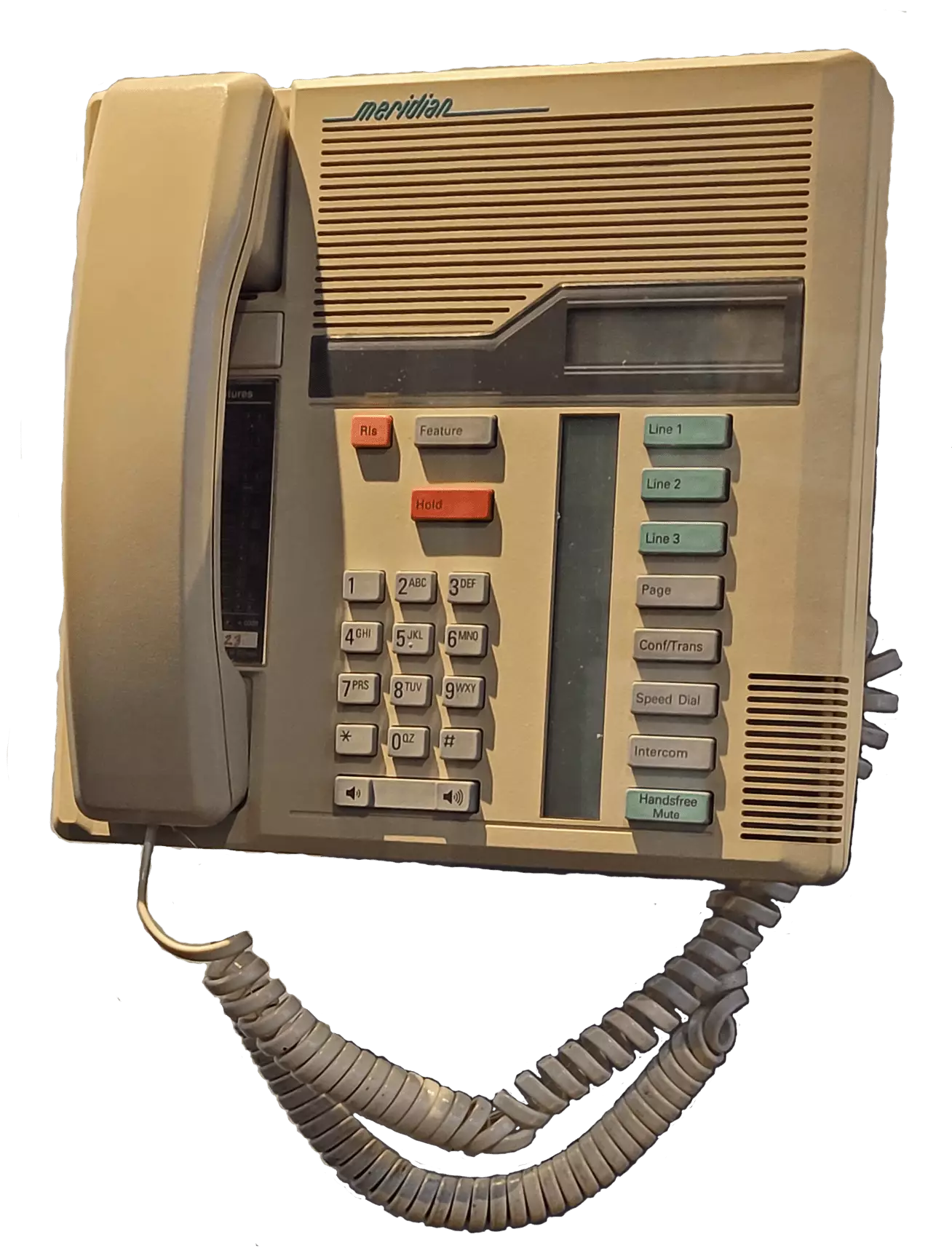
View this object in Matterport
In the late 1980s Julie worked with a team to remove 4-party lines from ISU dormitories and install single lines into each room. The new touch-tone phones, like the one shown here, replaced rotary dial telephones.
2013.26

 Making a Home
Making a Home
 A Community in Conflict
A Community in Conflict
 Working for a Living
Working for a Living
 Farming in the Great Corn Belt
Farming in the Great Corn Belt
 Abraham Lincoln in McLean County
Abraham Lincoln in McLean County




